2024 Chevrolet Silverado EV RST Review: Impressive Engineering Looking for an Audience
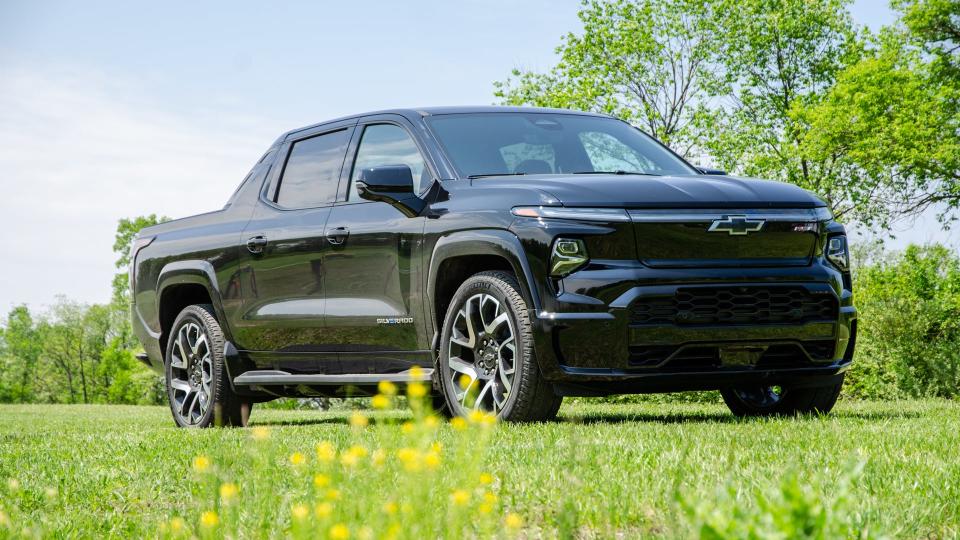
When I drove the Chevrolet Silverado EV WT, the work truck version of Chevy’s first electric pickup, I was impressed with its capability but struggled to think of a customer for it. Not many contractors are lining up to spend just shy of $80,000 on an abusable workhorse. But I thought my opinion would change when I drove the 2024 Chevy Silverado EV RST, the high-performance version. That seemed to make more sense.
Unfortunately, after a few hundred miles behind the wheel of the RST, it didn’t. I still have no idea who the hell this thing is for.

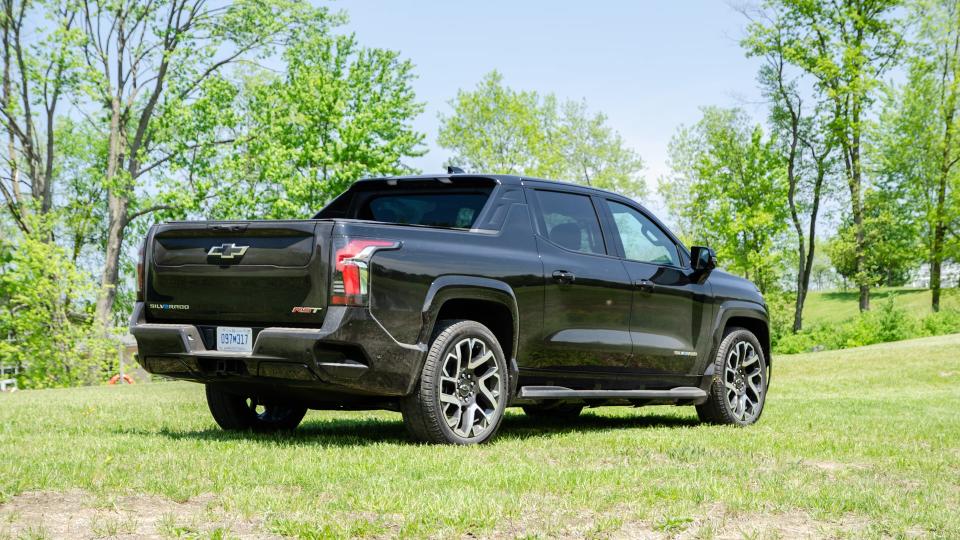

Let’s be clear, I know there’s a market for high-performance trucks, with vehicles like the Ford F-150 Raptor and Ram TRX. There’s even a big market for high-performance electric pickups, like the Rivian R1T and Tesla Cybertruck. So why am I confused by the Silverado EV RST?
On paper, the Silverado EV RST looks good. It’s good-looking, has a spacious cabin, and it’s comparable to its two aforementioned electric truck rivals in terms of power, performance, capability, and range. But when you look at its price tag and get behind the wheel, that initial optimism starts to disappear. Chevy can’t seem to decide whether the RST is a semi-luxurious version of a rugged pickup or a premium supertruck that can also handle some towing when it needs to. And you can feel that indecision from behind the wheel.
The Basics
The Silverado EV RST is Chevy’s answer to the Rivian R1T and Tesla Cybertruck. Expect to read those two names a lot in this review because their context matters. The RST is the highest-performance, most expensive version of the Silverado EV and it’s the one Chevy is launching to the public (the work truck is only available to contractors and fleets). While a mid-level, more affordable “LT” version is coming, the RST is the flagship model that Chevy is starting with. It’s pretty typical for automakers to launch with their flagship model, but in this instance, it may have been a mistake.
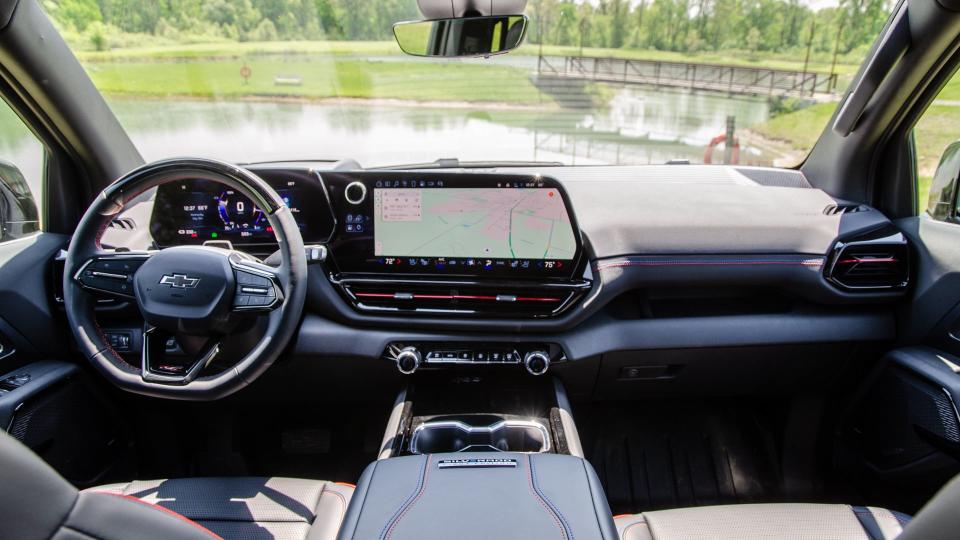
At first glance, the RST looks good. It has a high-performance Chevy Avalanche vibe that I really like, actually. It’s well proportioned, it’s more interesting to look at than the gas-powered Silverado, and it separates itself from the traditional pickup trucks customers are used to. However, not everything is perfect. I think it needs smaller wheels. The 24-inchers it rides not only ruin the ride a bit but they look too try-hard to me, like aftermarket wheels a 19-year-old would buy to impress friends. I prefer the WT’s much smaller wheels with a thicker tire sidewall, but they’re too small for the RST. There’s a happy medium somewhere in between those that I think Chevy should have gone with.
As cool as the Silverado EV RST is outside, though, it disappoints inside. Its design is barely changed from the WT, with its spartan, utilitarian, even hosable interior. While the RST obviously has much better tech, like its massive 17-inch infotainment screen and conjoined 11-inch digital gauge cluster, and much nicer seats, it doesn’t feel particularly special inside. With a nearly six-figure price tag, I was expecting more. There are far too many scratchy plastics and subpar surfaces for something that costs the same as a lightly optioned Cadillac Escalade. To make matters worse, while Chevy’s infotainment system mostly works well, my test car’s screen unexpectedly shut down and rebooted during my first drive. Considering GM’s recent EV software issues, that didn’t inspire a ton of confidence.



Underneath that good-looking skin lies the now-familiar GM Ultium platform. Its massive 205 kWh battery pack, which consists of double-stacked cell modules, sends power to two electric motors, one at each axle. Combined, they make 754 horsepower and 785 lb-ft of torque but full power is only available in Wide Open Watts (WOW) mode. According to Chevy, the RST gets from zero to 60 mph in 4.5 seconds—and that’s probably true, but it doesn’t feel that fast from behind the wheel. Probably because it weighs more than three tons, with an eye-widening curb weight of 9,119 pounds!
Driving the Chevy Silverado EV RST
Chevy designed this truck as an EV from the ground up, unlike Ford did with the F-150 Lightning. The Silverado EV is built on a unique Ultium chassis which, in layman’s terms, looks like a big battery pack with subframes mounted to it. So it isn’t a traditional ladder frame pickup truck chassis but it isn’t a unibody like the Rivian or Cybertruck, either. You can feel that as it jounces like a pickup over bumps. However, in its defense, it feels tighter and better screwed together than a typical body-on-frame pickup.
Like the Silverado EV WT I drove last year, the RST has decent steering for a pickup and it’s surprisingly quiet inside. However, the RST’s ride quality is even more brittle thanks to its massive 24-inch wheels. Because of those and the factory all-season tires—our test car had Michelin Primacy rubber—it won’t be good on a job site or off-road. So you get the poor ride quality of a typical pickup without the rugged durability.





Do those tires play a part in its grip or handling? Not really. While the RST steers well enough, no one would confuse it for a genuine performance truck like an F-150 Raptor. It feels every bit as big as it is on the road, allows enough body roll to make your passengers regret their lunch burritos, and isn’t as quick as you’d think.
I had a chance to try its WOW mode (the absolute worst performance mode name in the biz) and it’s unfortunately underwhelming. To use it, you go into the drive mode menu, press a funky-looking button, hear its strange engagement effect, and stomp the go-pedal. For the best results, Chevy recommends putting the adaptive air suspension in its lowest entry/exit setting and turning all adjustments to Sport. Performance EVs have become internet-famous for freaking people out while launching off the line, and while the RST is quick, it isn’t alarmingly quick and it never has the same drama as some of its rivals.
The Highs and Lows
There are some positives about the Silverado EV RST. For starters, it’s an electric pickup truck from a mainstream brand. That in itself can’t be overlooked. It also has some genuinely great features. The passthrough mid-gate is awesome and will make owners’ lives much easier over the years. Its 11,000-pound towing capacity will make the RST a viable option for many potential boat-owning customers. And like the F-150 Lightning, the RST can also power your house like a four-wheeled backup generator. Chevy demonstrated it for us and it works within a few seconds of the power going out.






Of course, there are a few negatives as well—things you won’t notice on paper but will frustrate owners over time. One is the lack of a start/stop button. To start the RST, you simply press the brake pedal. To turn it off, just put it in park and open the door. Seems simple enough, right? Well, it is until you’re going in and out of the truck often and it starts to get confusing because you can’t just leave it on; you have to reach in and press the brake. The front trunk might be waterproof but it’s also smaller than the Lightning’s. The brakes are also mushy and don’t provide the stopping confidence you’d want in such a heavy vehicle. In Chevy’s defense, the RST’s one-pedal driving works incredibly well, negating the need for using the physical brake pedal much.
Chevy Silverado EV RST Features, Options, and Competition
At $96,715 as-tested, you’d expect some top-notch features and options. While the RST is reasonably well-equipped as standard, it’s far from the most feature-rich six-figure car on the market. For example, it has heated seats and a digital rearview camera but its rear seats aren’t heated (possibly due to their ability to fold away), and the glass sunroof doesn’t open or even digitally become opaque like some other EVs. However, it does have GM’s excellent Super Cruise system, which works incredibly well and can even be used while towing a trailer. It’s a little shakier than normal with a trailer hooked up but it still works well.


So here’s the $96,715 question: How does the Silverado EV RST compare to every other electric pickup truck, mainly the oft-mentioned Rivian and Cybertruck? In its most powerful, most expensive spec, the Rivian R1T Quad-Motor makes 835 horsepower, has 328 miles of range, does 0-60 mph in 3.0 seconds, and it starts at $88,800. Opt for the entry-level Dual-Motor spec and you only get 533 horsepower but it still does 0-60 mph in the same 4.5 seconds, all for $80,800. The Cybertruck Cyberbeast makes 845 horsepower, does 0-60 mph in 2.6 seconds, and has 320 miles of range, all for $99,990. However, the $79,990 Cybertruck All-Wheel Drive makes 600 horsepower and still gets from 0-60 mph in 4.1 seconds. Both the Rivian and Cybertruck can tow 11,000 pounds, the same as the Silverado EV.
The only area where the Silverado bests its rivals is range. With over 400 miles to a charge, the RST is as long-legged as a good diesel sedan. However, it needs a battery pack that’s nearly double the size of its rivals to do so.
What about internal combustion trucks? Chevy is adamant that it didn’t set out to make an electric pickup but instead, a great pickup that just so happens to be electric. Yet, you can get a V8-powered Silverado 1500 Trail Boss that makes 420 horsepower and 460 lb-ft of torque, hits 60 mph in 5.7 seconds, and can tow 9,400 pounds. All of those figures are worse than the EVs but it only costs $55,590 after destination. The most expensive Silverado 2500 High Country with the 6.6-liter Duramax diesel engine can two 16,000 pounds and costs $83,980 out the door.
Range, Charging, and Efficiency
One area where the RST shines is range. We started our journey with 404 miles of estimated range on a full battery. At the end of the day, we had 52% battery left and more than 200 miles remaining. It did exactly as it said it would, even though we never even sniffed three miles per kWh. We hovered in the low twos and even dipped into the high ones at times, but it never went over 2.5 miles per kWh during our couple hundred miles. The RST isn’t the most efficient EV on the market but, because of its massive battery pack, it has among the furthest range. Though, it’s worth noting that the Rivian R1T gets over 300 miles of range from a battery pack that’s about half the size.
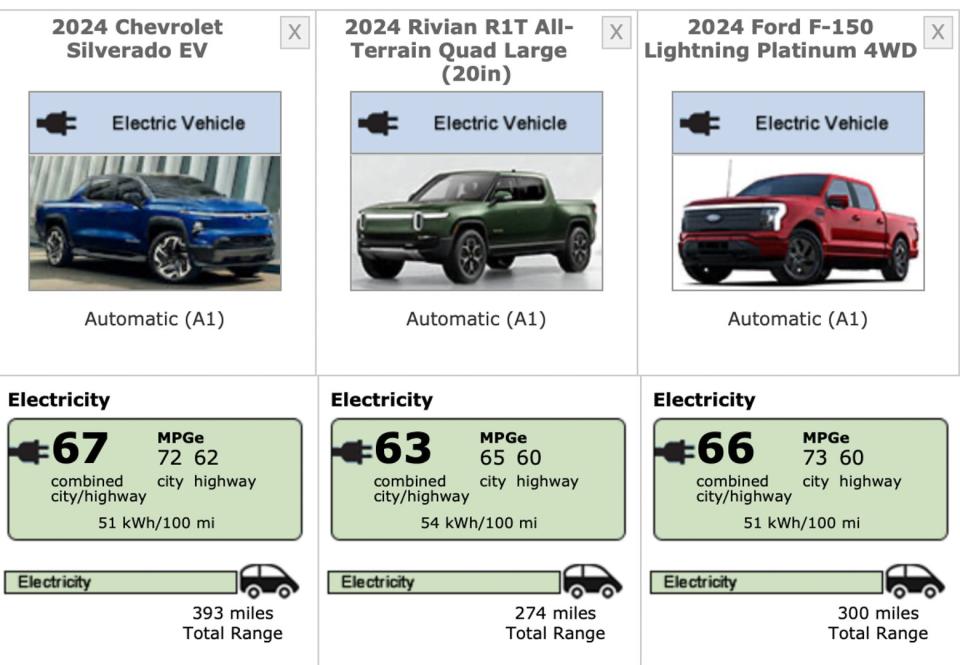
There aren’t many benefits to having a battery pack that weighs as much as my 1996 E36 BMW 328i sedan but outright range is one. Another, at least in Chevy’s case, is charging. Chevy’s big Ultium battery pack is double-stacked with modules, meaning there are two sets of battery cell modules with one sitting on top of the other. And since it charges both sets at the same time, it’s capable of charging at a combined 350 kW, so it can add 100 miles in just 10 minutes on a compatible DC fast charger. Is that extreme charging speed worth the weight? I’m not so sure, but I’ll leave you to make the decision for yourself.
Value and Verdict
It’s easy to see the positives in the Silverado EV RST, and all of the impressive engineering that Chevy’s team put into it. With a unique and interesting chassis design, a stylish yet practical body, 11,000 pounds of towing capacity, and a bladder-busting range, there’s a lot to like about the RST. However, at $96,495 to start, it’s far too expensive. There are better values in both the electric and internal combustion truck markets.
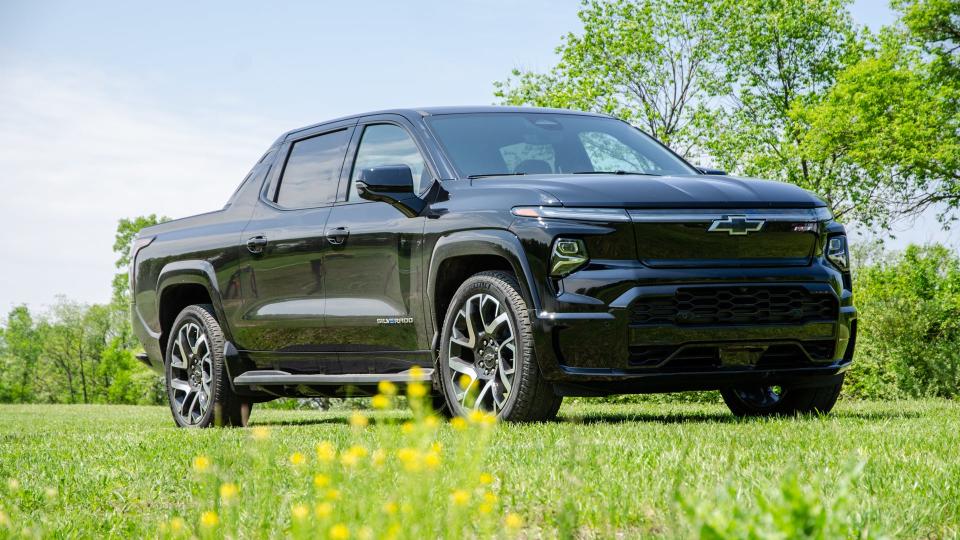
Then there’s the way it drives. There’s nothing particularly special about it. It doesn’t feel any better on the road than any other gas truck and it isn’t as tech-forward or as interesting as its electric rivals. For the life of me, I can’t figure out who’s buying this truck. Premium truck buyers aren’t giving up their gas or diesel engines for an electric truck that doesn’t drive any better. And lifestyle electric truck buyers aren’t going to choose a legacy brand like Chevy over something new and exciting like Rivian or Tesla. If the RST were $70,000 to start, I could see some conventional truck owners taking a chance on it. But GM needs to figure out whether it wants the Silverado EV to be a more stylish, better handling, more comfortable lifestyle truck or an affordable, rugged alternative to gas trucks. Pick a lane, Chevy, pick a lane.
2024 Chevrolet Silverado EV RST Specs | |
|---|---|

 Yahoo Autos
Yahoo Autos 